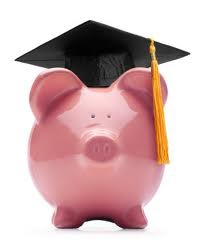A new type of loan has hit the markets to help students pay for college. But is it right for you?
The average cost of a four-year degree at a public university or college is nearly $20,000. And you can expect that cost to continue rising—at the rate of 8 percent each year. That means the cost to attend college doubles every nine years. Even with savings, many find they need to borrow money to pay for their education. A new fixed-rate private loan for students has recently become available to help.
Federal student loans
First, let’s start where any undergraduate student should begin their loan search: with the federal Stafford loan. The government will lend up to $31,000 to undergraduates whose parents claim them as dependents. These loans should be your first choice because of their low fixed interest rate (currently starting at 3.4 percent) and their built-in protections, such as the ability to defer payments in times of financial hardship and forgiving balances after 25 years of payments.
Private student loans
But what if you don’t qualify for a Stafford loan, or need more than the $31,000 federal loan limit? Then a fixed-rate private loan may help. This new student loan product, offered by several banking institutions including Wells Fargo and U.S. Bank, provides the ability to better budget by knowing exactly what your payment will be every month.
This peace of mind comes with a price, however: interest rates can range from 7.29 percent to 14.21 percent depending on the credit scores, assets and employment status of the borrower and, if needed, co-signer. Loan terms typically run 10 to 15 years, and private loans offer no protections and are attached to the credit history of both the borrower and co-signer.
If you plan to pay off your loan quickly after graduation, a private variable-rate loan may be a better option as interest rates are currently quite low. However, considering it takes an average of 16 to 18 years for a borrower to repay student debt, that interest rate could rise.
Choosing the right financing
Before choosing a loan to cover your remaining education expenses, consider the interest rate, loan terms, how long you plan to carry the loan and your future earning power. The average college student’s debt after graduating is just over $24,000. In general, don’t borrow more than you think you will earn after your graduate and always use federal loans, scholarships, grants and personal savings as your first means of financing your future.
See this article for additional tips and resources to help pay for college.
Related Articles:
- How To Save For College With A 529 Plan
- 7 Steps to Manage Your Money When You Have Kids
- Tips To Manage Your Money When Your Married
- Six Steps To Create And Manage A Budget
- How To Choose A Financial Advisor
- Catch Up On Your Retirement Savings
 Print
Print Email
Email








